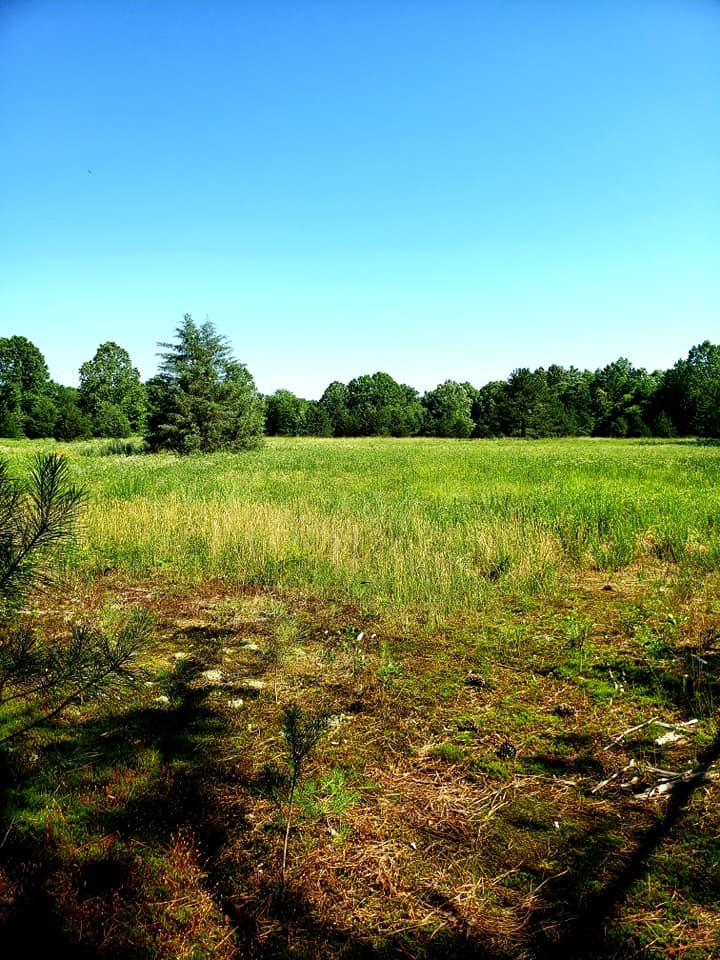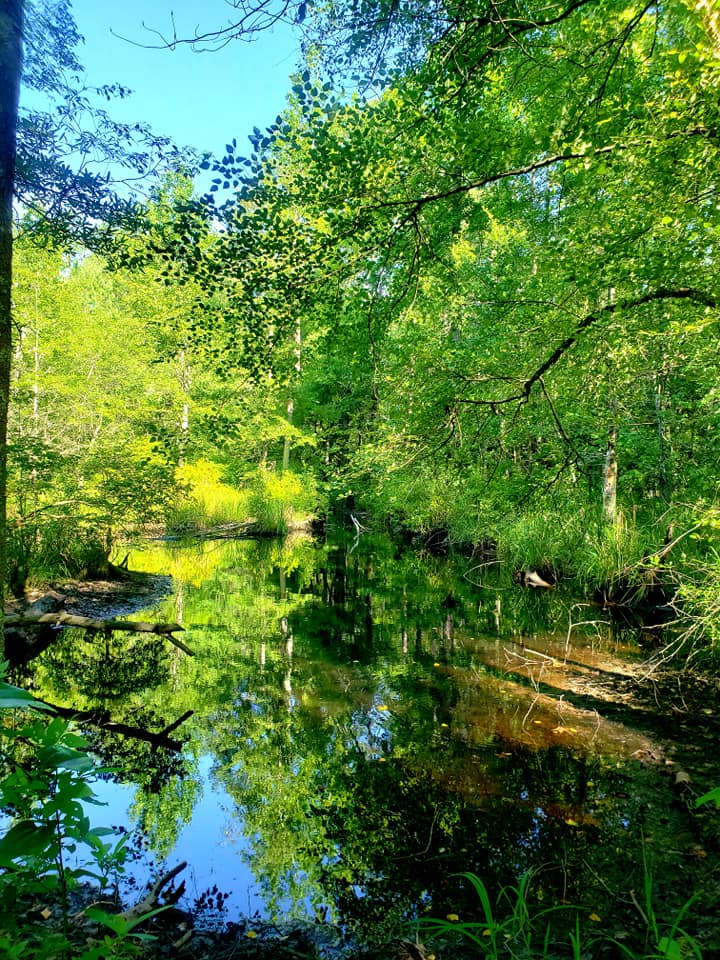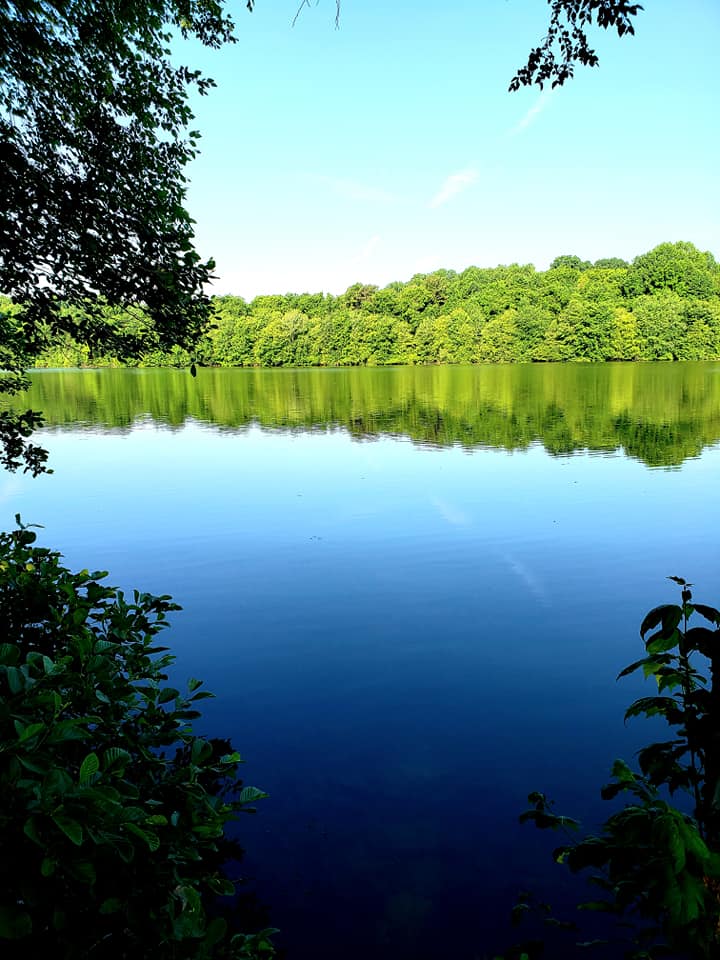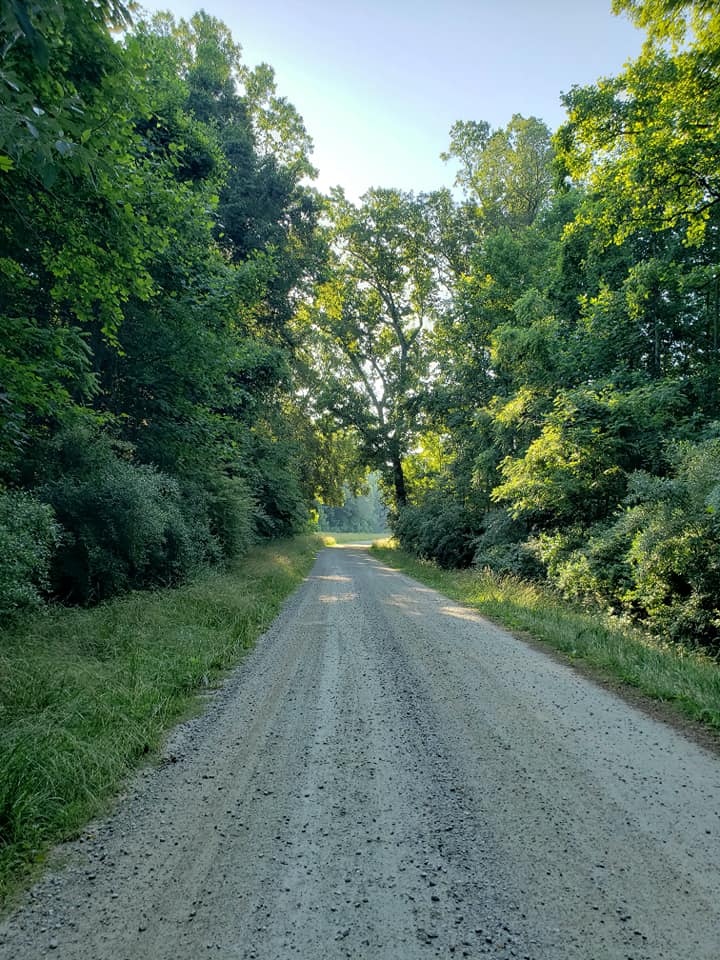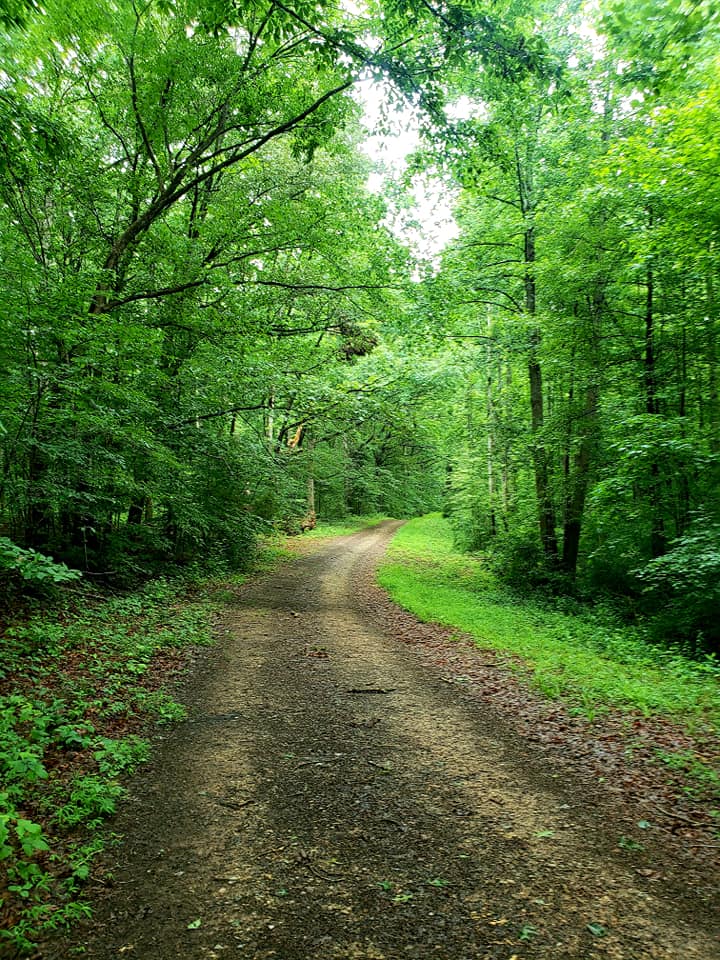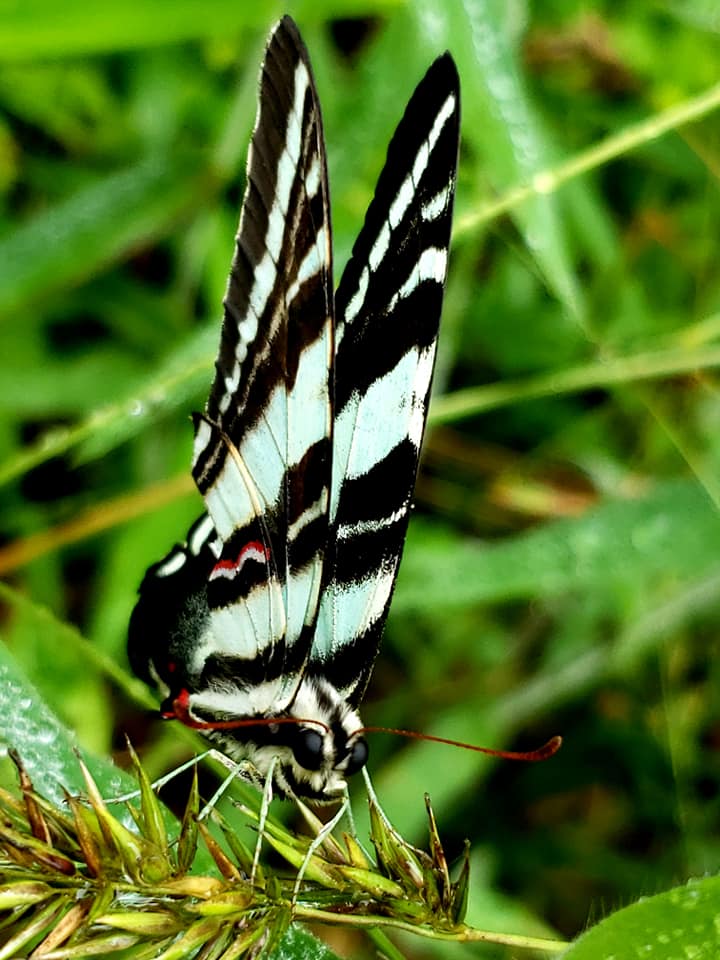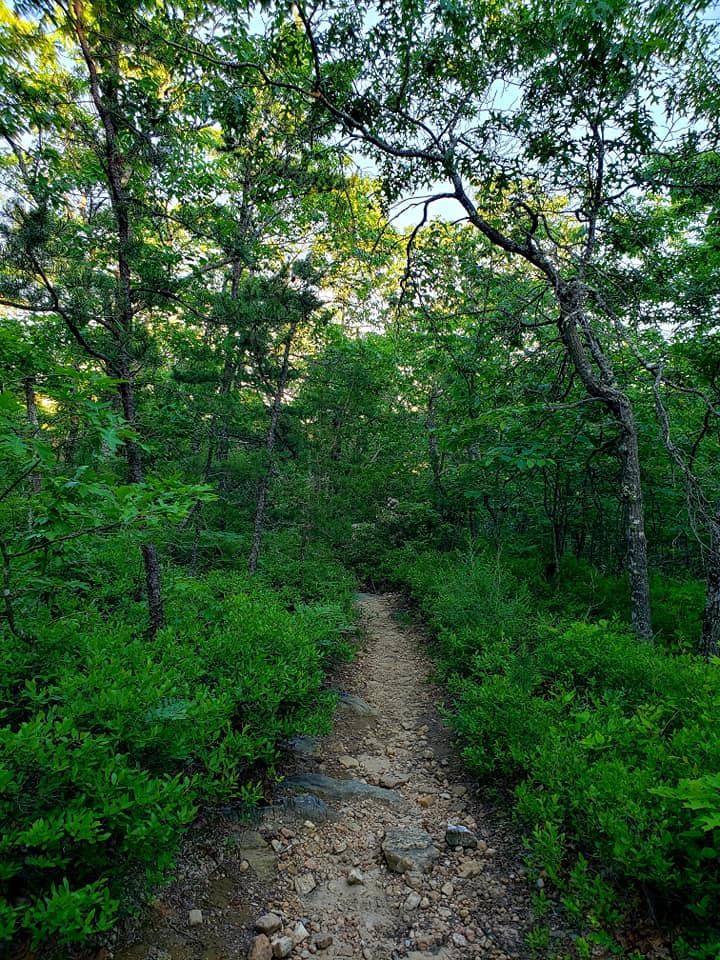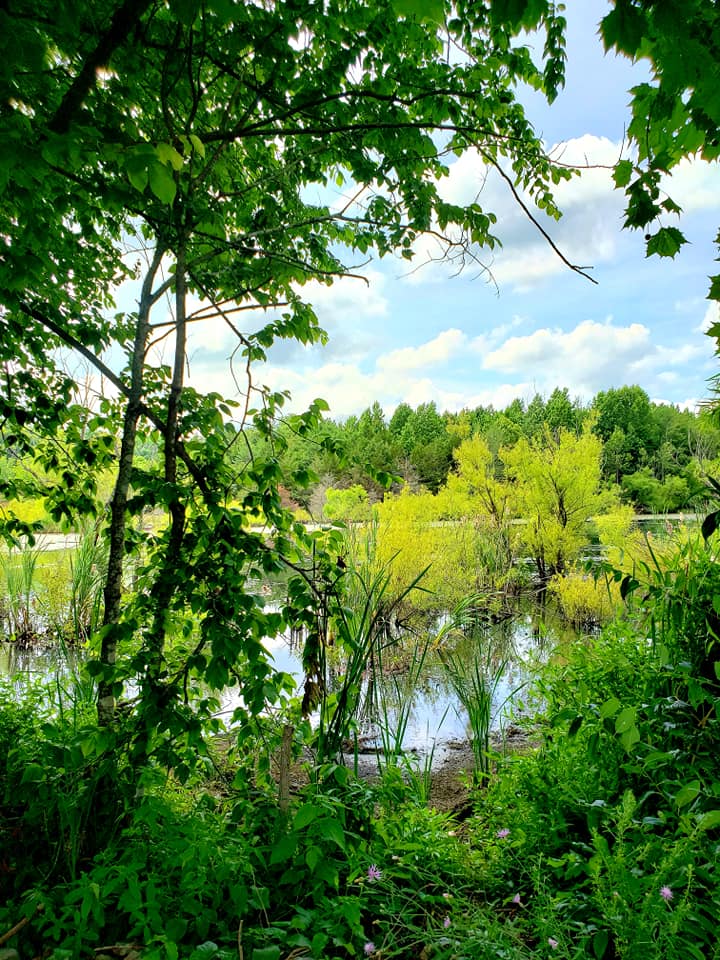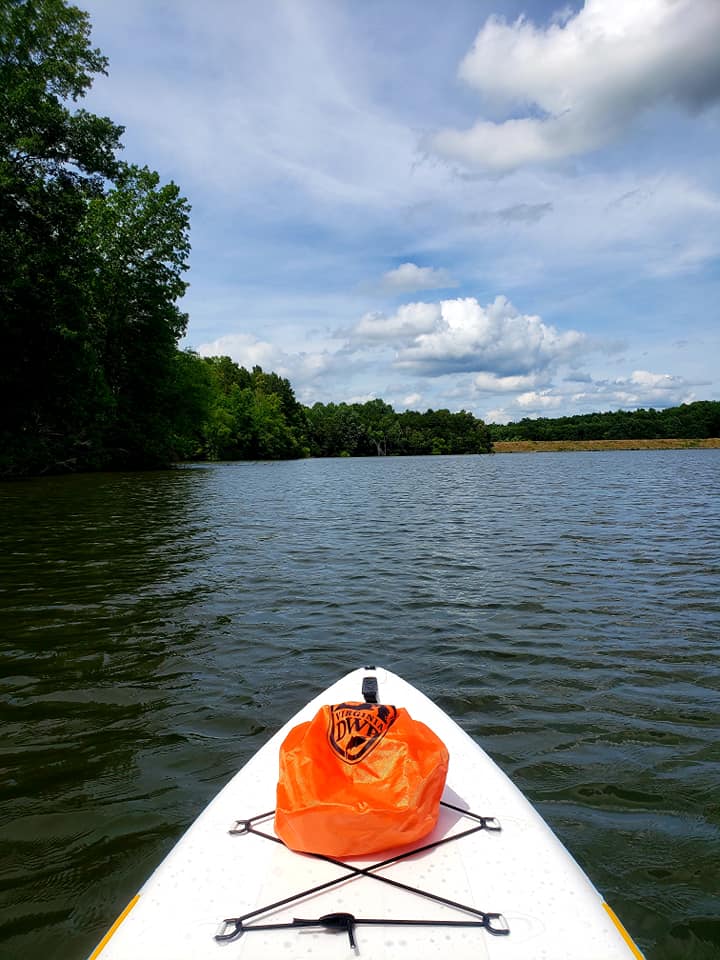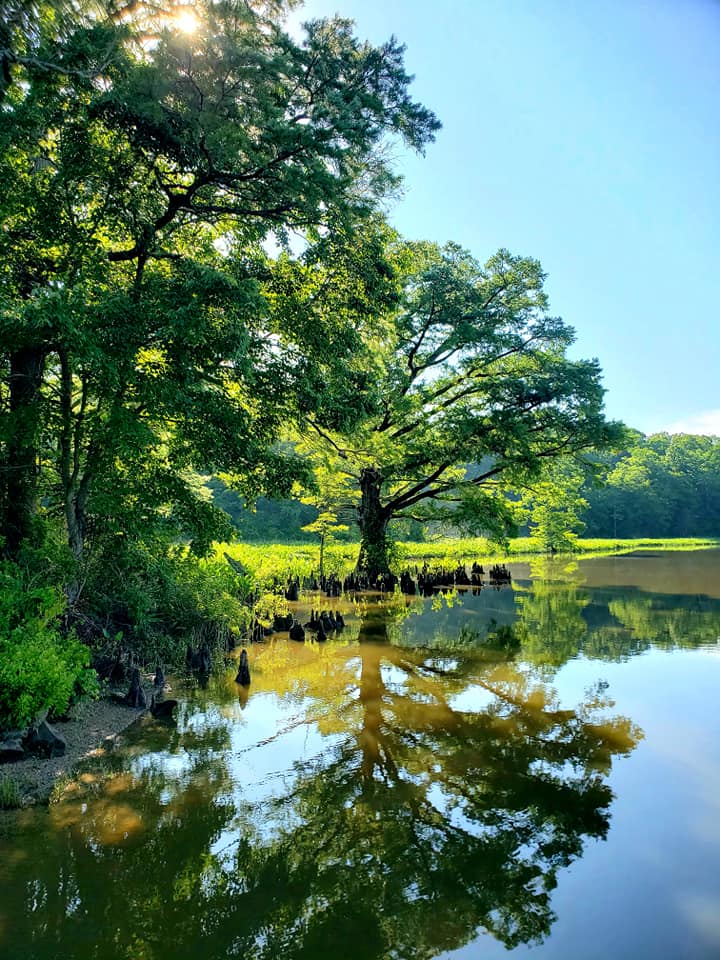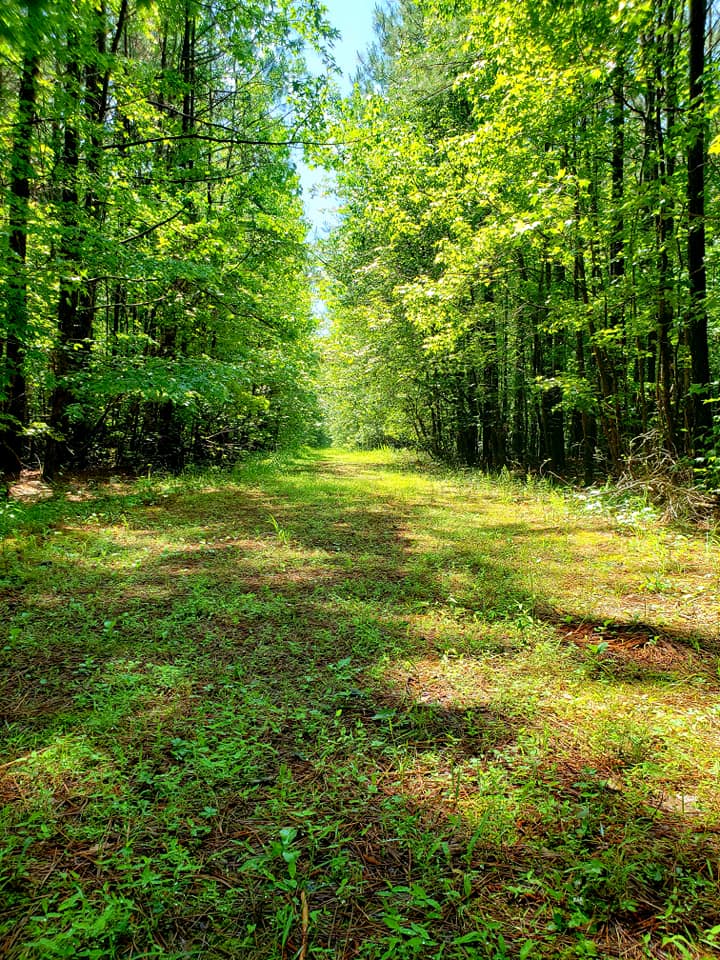By Molly Kirk
Photos by Lisa Ghidotti
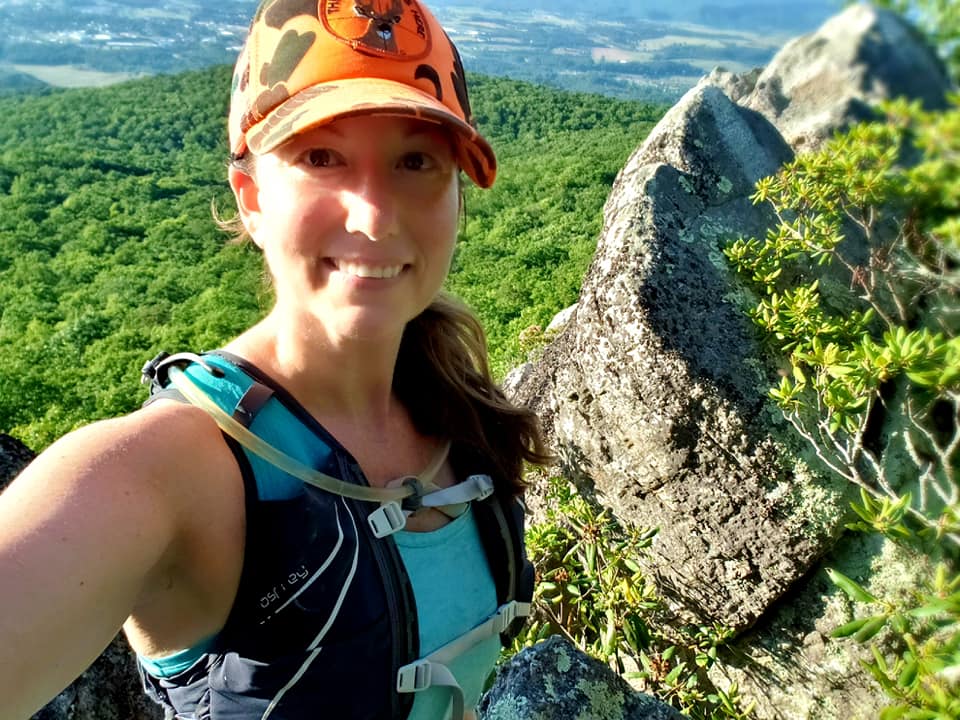
Lisa takes a selfie at Big Survey WMA in Wythe County, Virginia.
“A Wildlife Management Area (WMA) is like a choose your own adventure book, and those were my favorite books growing up,” said Lisa Ghidotti. “I’m a hiker at heart, and I follow the trails at state and national parks, but on WMAs, I’m more of an explorer. I can blaze my own trails. And that’s what really appeals to me. Being in the outdoors really grounds me; it’s where I can be my most authentic self.”
Ghidotti, from Richmond, has set a challenge for herself of visiting all of the Virginia Department of Wildlife Resources’ (DWR) WMAs. She posts her adventures, and multiple photos of her WMA visits, on her Facebook page and Strava account. “I want my friends and family to see the world through my eyes, and to see what you can do and see at WMAs,” she said. “I want them to see that there are diverse landscapes, beautiful bodies of water, and vibrant colors. I want to educate and inspire my friends and family that there are these incredible public lands in Virginia that anyone can visit.”
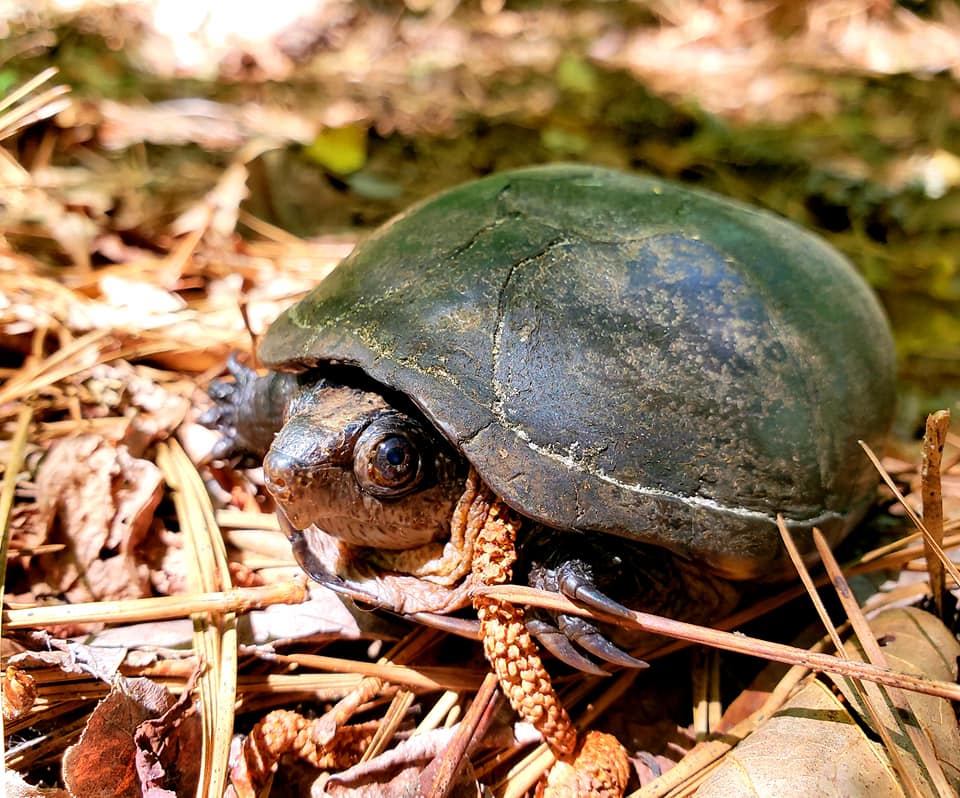 DWR owns more than 225,000 acres of public land at WMAs across the state that are open for everyone to enjoy. The main focus for WMAs is to maintain healthy habitat for wildlife to thrive, and many WMAs are open for hunting during hunting seasons and are popular with anglers. But most WMAs are also open for wildlife viewing, hiking, and primitive camping. Those accessing a WMA must have a Restore the Wild membership, DWR access permit, current hunting or fishing license, or current boat registration.
DWR owns more than 225,000 acres of public land at WMAs across the state that are open for everyone to enjoy. The main focus for WMAs is to maintain healthy habitat for wildlife to thrive, and many WMAs are open for hunting during hunting seasons and are popular with anglers. But most WMAs are also open for wildlife viewing, hiking, and primitive camping. Those accessing a WMA must have a Restore the Wild membership, DWR access permit, current hunting or fishing license, or current boat registration.

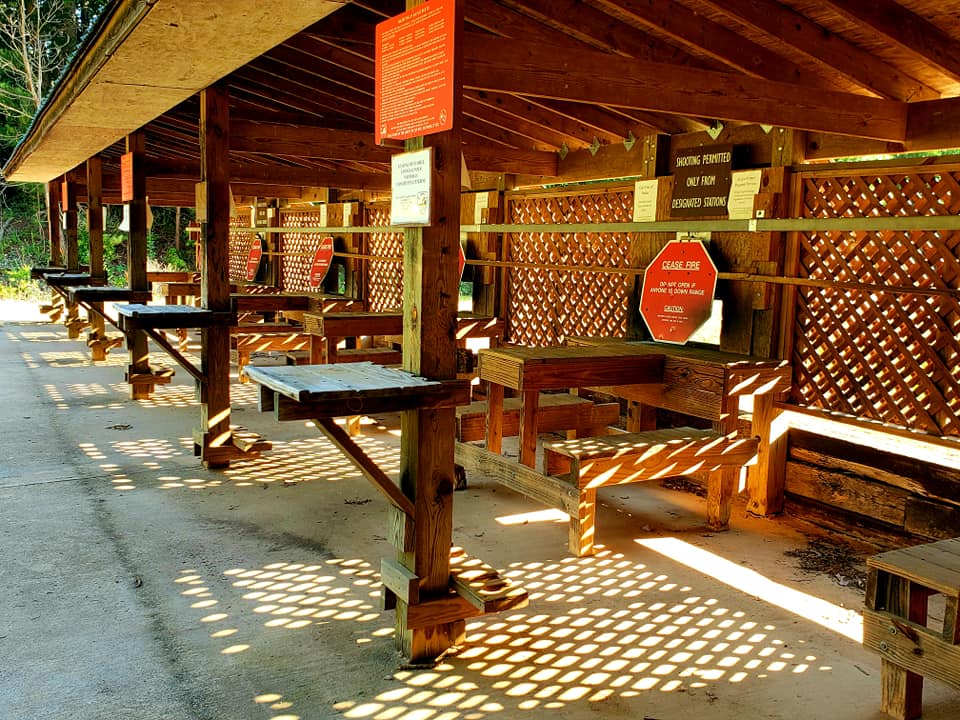 “We’re all outdoor enthusiasts at heart, whether we view wildlife through the rifle scope or a camera lens or just as we’re walking by,” said Ghidotti. “WMAs are popular with the traditional hunters and anglers, but there’s room for hiking and paddling, wildlife viewing, horseback riding. There’s a little bit for everybody at WMAs! I’m not sure that a lot of people who are outdoor enthusiasts realize that the Commonwealth has an extensive portfolio of WMAs and that there is something for everyone.”
“We’re all outdoor enthusiasts at heart, whether we view wildlife through the rifle scope or a camera lens or just as we’re walking by,” said Ghidotti. “WMAs are popular with the traditional hunters and anglers, but there’s room for hiking and paddling, wildlife viewing, horseback riding. There’s a little bit for everybody at WMAs! I’m not sure that a lot of people who are outdoor enthusiasts realize that the Commonwealth has an extensive portfolio of WMAs and that there is something for everyone.”
Ghidotti is an experienced outdoor enthusiast, having completed the Virginia State Park Trail Quest program. She notes that WMAs offer more off-the-beaten-path adventures than state parks. “No WMA is the same; they all have a different flavor,” said Ghidotti. “Some of them are in the mountains, some are more coastal plains. If you were to ask me my favorite so far, I’d say Big Survey WMA. I did the High Rocks trail there, and it is such a hidden gem. It’s a true moderate hike. AllTrails has a good map of it, it’s a mile and a half each way to get to the top, and it’s spectacular views when you get there. It’s a gorgeous single-track trail, which not all WMAs have.”
When she picks a WMA, Ghidotti does some research on the DWR GoOutdoorsVirginia app or on the DWR website. “I’ll read the description of the WMA there and what outdoor activity opportunities are listed. That’s how I figure out if I’m going to hike or kayak or paddleboard,” she said.
She visits WMAs aware that there are limited amenities, including a lack of bathroom facilities and minimal groomed trails. Her experience as a trail runner has helped her know what to expect. “I wear pants, I apply bug spray, and I check for ticks while I’m there and when I get home. It just gives you an opportunity to have an adventure and really explore,” Ghidotti said. “I think some of the lack of comforts might push away some folks, but it’s also good to get out of your comfort zone and challenge yourself. People shouldn’t be afraid of being uncomfortable; it’s how you get more grit and become more resilient.”
One item Ghidotti does make sure to pack for a WMA adventure is an item of blaze-orange clothing, usually a hat. If you’re not sure whether a hunting season is active at the time, wearing an item of blaze orange is a wise precaution. Ghidotti has encountered some squirrel hunters when exploring the Chickahominy WMA. “They were very welcoming. They let me watch them dress the squirrels, and another hunter told me some of his favorite ways to prepare squirrel. I don’t hunt, but I am fascinated by it,” she said.
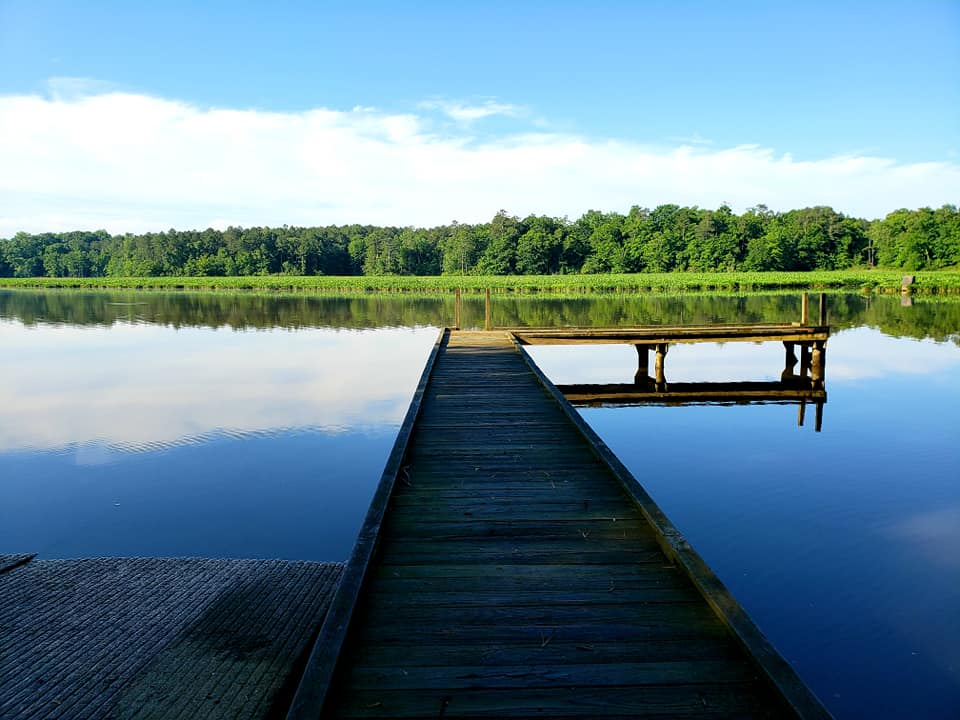
Ghidotti has visited 10 WMAs so far, and hopes to have experienced them all by the end of 2022. “I was always of the mindset that the WMAs were only for hunting and maybe some people who fish, and that they wouldn’t necessarily offer anything for someone like me,” she said. “I didn’t see a place for me at the WMAs. I was really wrong about that and I’ve come to see that I was wrong, in that they offer so much more for everyone.”


